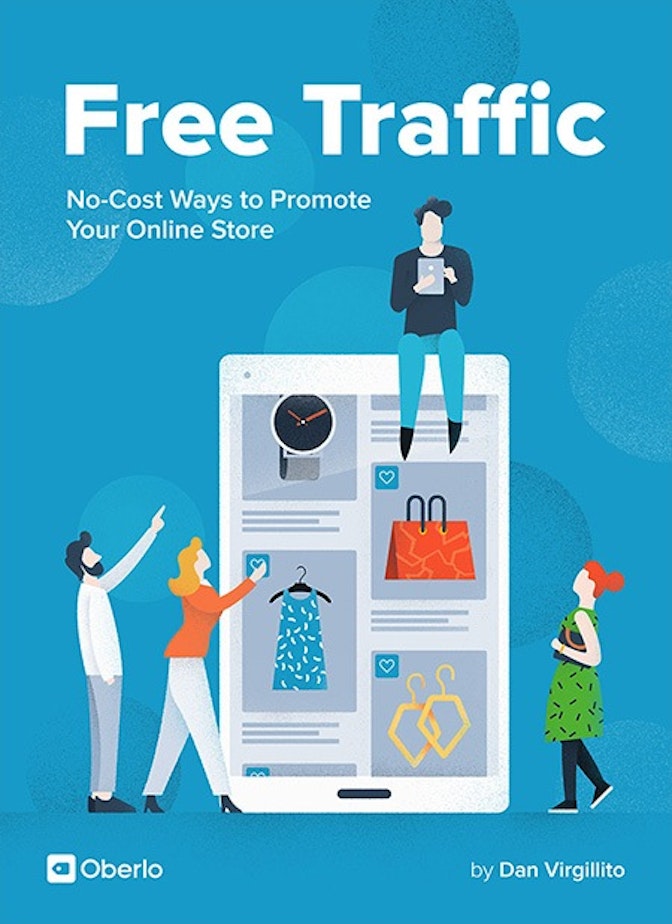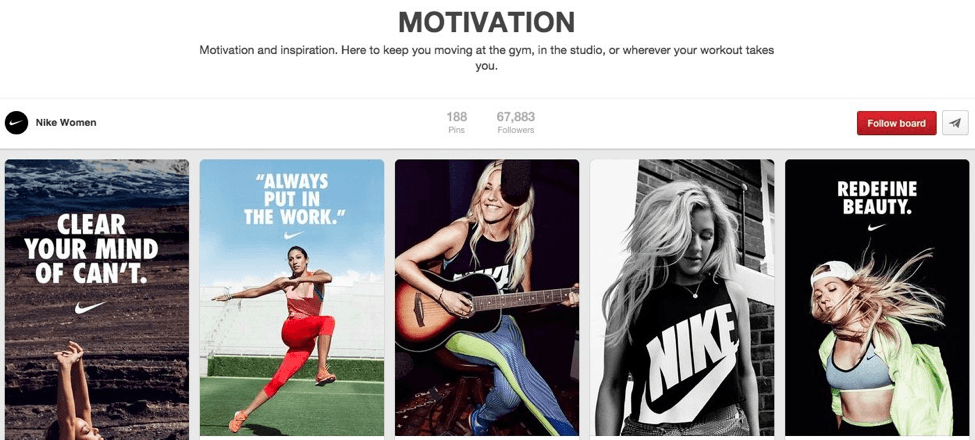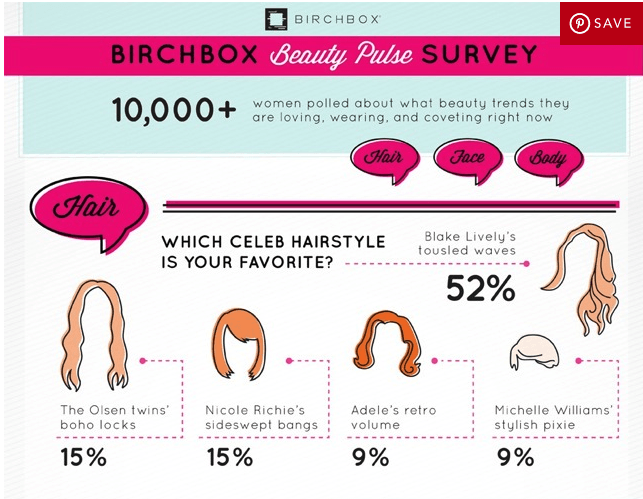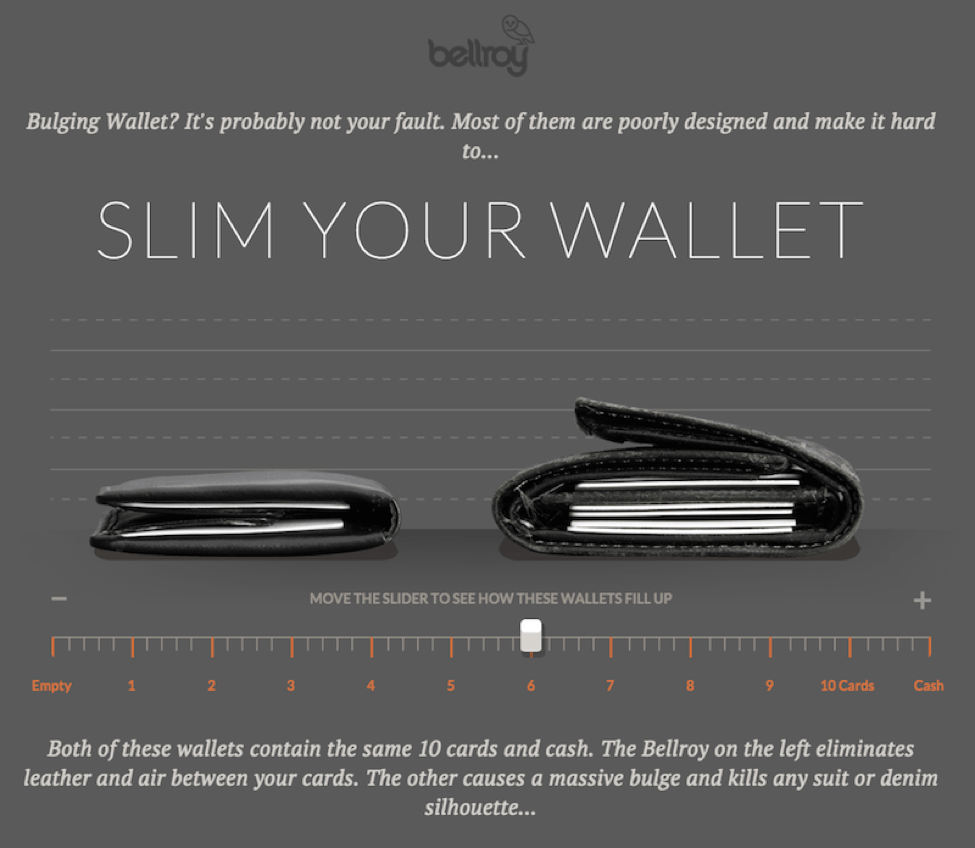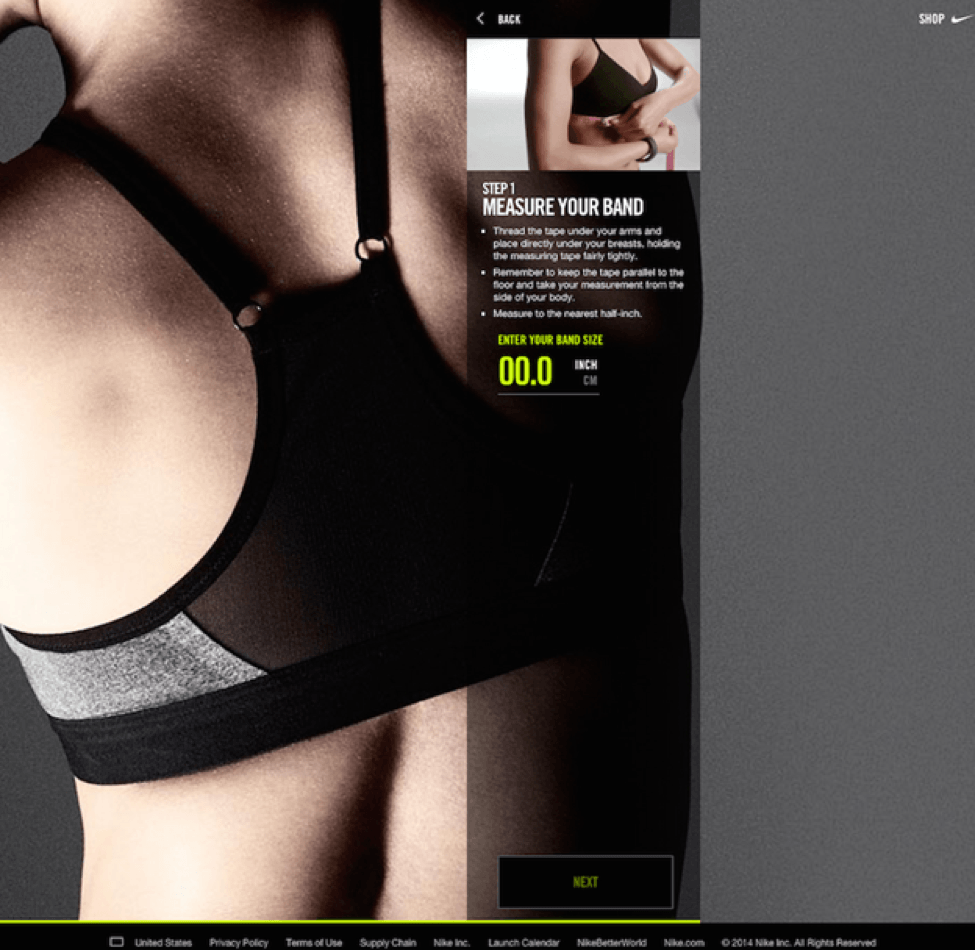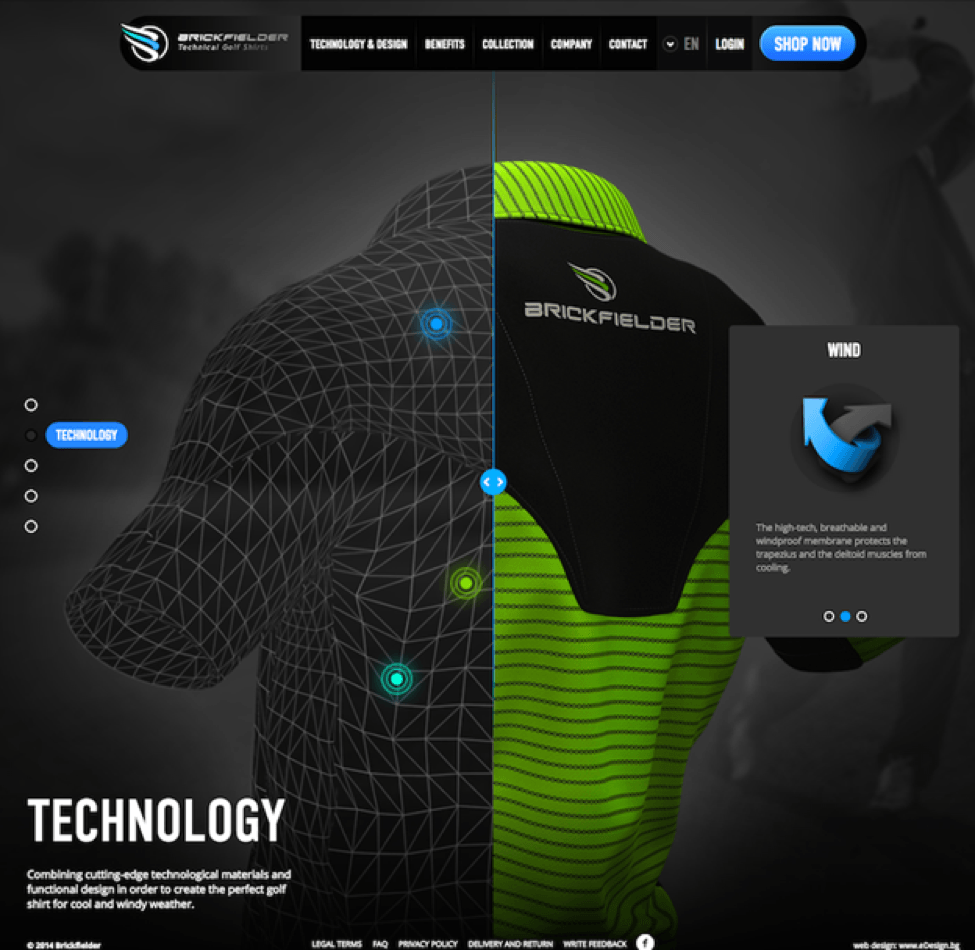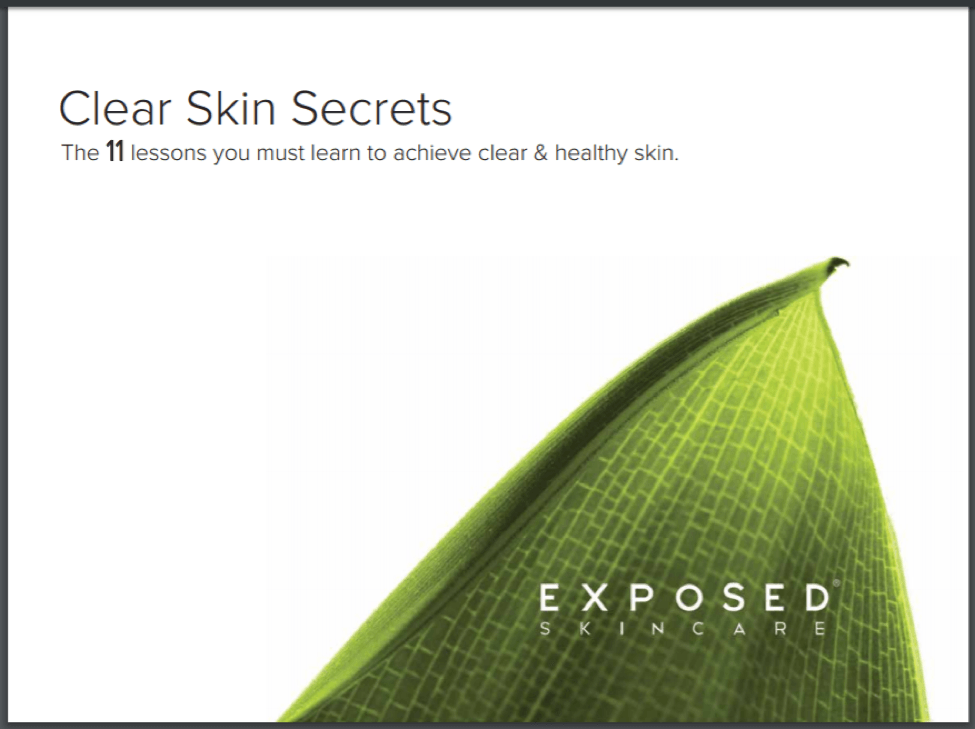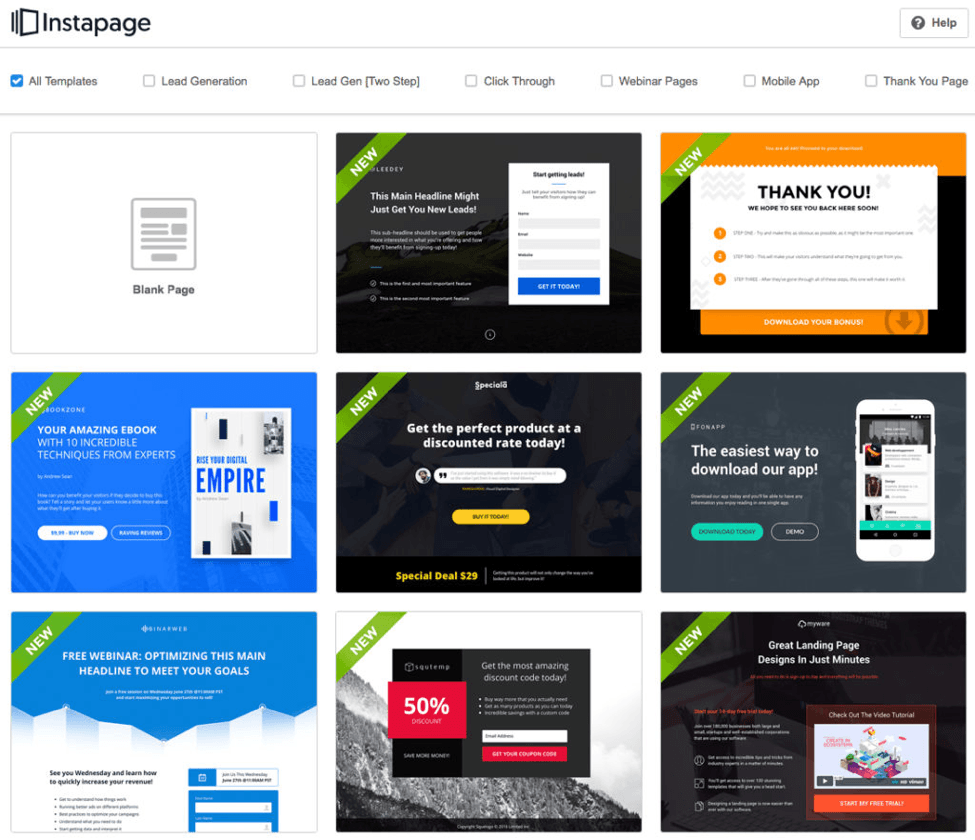As the owner of an online store, it’s naïve to think that having a great looking website is enough for driving tons of visitors to your webpages. While design can grab your audiences’ attention, and attractive product pages can influence their decisions, people won’t admire stores they know nothing about.
To make people aware of your existence, you need to create fun, useful and engaging content. Research shows that people are spending a lot of their time online, and it’s estimated that one-fifth of it is spent consuming content. The truth is that great content can help you engage, motivate, and inspire your audience without making them feel like you’re selling to them.
In case you need a little more convincing, Demand Metric’s research should change the way you look at content creation as a whole. The company found that:
- 60 percent of consumers like to read relevant content from companies
- 82 percent have more positive feelings about a brand after reading their custom content
- 70 percent feel closer to companies because of content marketing
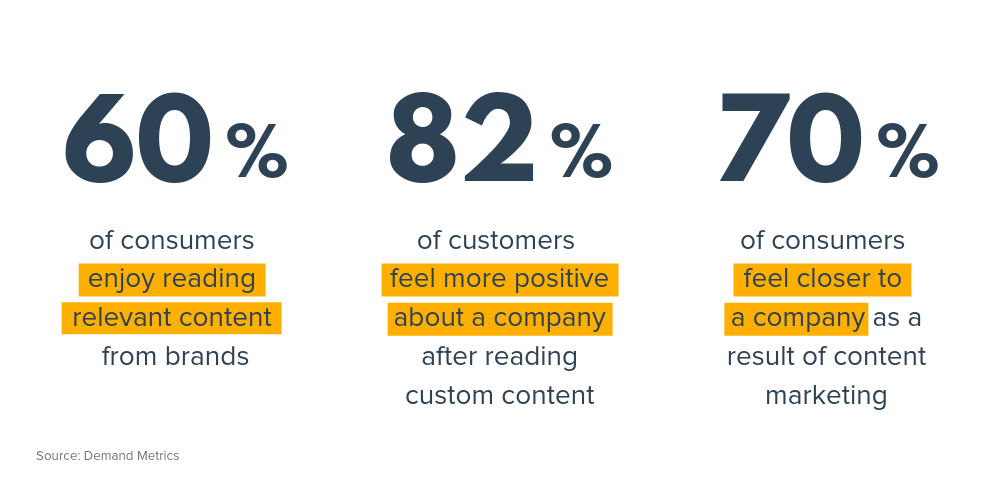
Not only do consumers strongly value great content, they’re starting to expect it as the status quo.
Unfortunately, many ecommerce stores create content for the sake of putting something out there. There’s seldom a clever strategy behind content creation and hence it rarely makes a difference in terms of organic traffic and conversions.
If you’re not sure where to start, try blogging. But not just any blogging – it has to be interesting, relevant, timely, and helpful. You should be answering the questions that your potential customers are asking, as well as providing them with strategies to help them accomplish their goals.
Content creation can also include videos, case studies, research papers, infographics, podcasts, webinars, and online courses. And once you spend the time developing all of it, promote and distribute it whenever you find a place where it naturally fits. (Spamming out anything, including your content, is always a bad idea.)
In this chapter, we’ll discuss:
- How to go about writing blog content at least once a week
- How to plan and create other types of valuable content
- Strategies for content promotion and distribution that gets you customers instead of enemies.
But before we get into the good stuff, let’s quickly go over the definition of content creation.



What is Content Creation?
Content creation is the process of creating and distributing valuable content in the shape of articles, videos, infographics, and other formats. It is often used by businesses generate leads, grow their customer base and drive consistent traffic to their website.
Simply put, if you’re not creating content, you are missing out on a huge opportunity to gain online exposure.
→ Click Here to Launch Your Online Business with Shopify
To get you started, we’ve done a deep dive on all the approaches you can take to create high-quality content for your website — read on and let us know if there are any tactics you think you need more help with.
5.1 Maintain a Quality Blog
It’s easy to visualize the value of writing blog posts for an online publisher, but when you run an online store, is there still any gain from blog content?
Apparently, there is. Adding a blog to your ecommerce site can drive web traffic in ways that paid advertising can’t. With companies that blog getting 55 percent more web visits and 81 percent of buyers conducting online research before making a purchase, you could attract several eyeballs through your blog that will gain you the recognition of consumers as well as other industry authorities.
Need proof? Like any ambitious online retailer, prom and party apparel company Ever-Pretty, wanted to create valuable blog content to enrich the lives of its customers. lite. To achieve this goal, the company prioritized content creation and regularly posted high quality content on its blog.
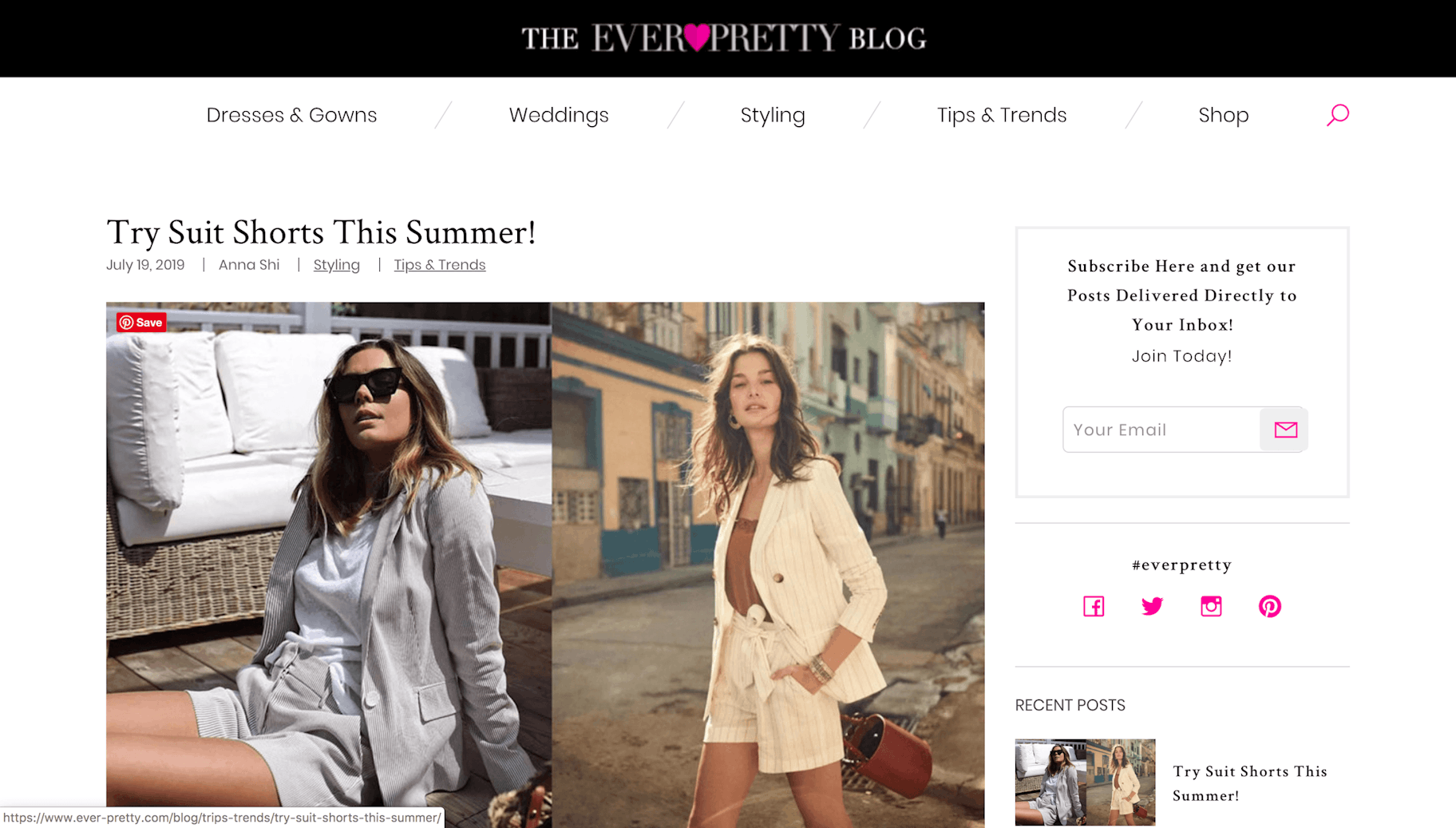
The brand posts new articles frequently to ensure returning visitors always find something new. Posts also feature links and images of relevant products to help move traffic down the sales funnel to turn prospects into customers. While it may not lead to an immediate increase in sales, having a blog can help expand your reach and introduce your brand to a wider audience.
How Often Should You Blog?
2-4 posts per week is an ideal blogging schedule to follow when you’re just starting out. It’s a smart and effective way to gain web traffic, and you also don’t overwhelm your target audience with a plethora of posts. Innovative sports brand Under Armour follows this posting schedule to increase brand awareness and drive traffic to its ecommerce site.
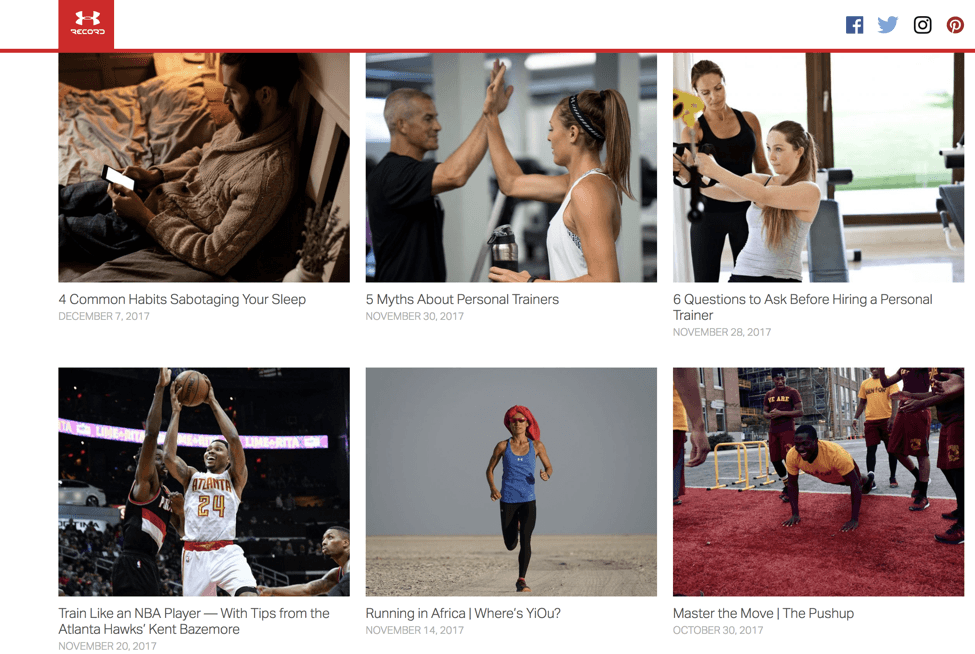
One post per week can work in your favor if you’re looking to build anticipation in your site visitors. Because you get a sufficient amount of time to conduct research, you can produce high-quality, blog content that covers everything from case studies to industry-related examples. If you don’t have a lot of time and resources to allocate to content creation, writing a blog post once a week is sufficient.
Writing a blog post or two each month can help build trust in your brand as you publish only when you have something worth talking about. With enough time on your hands to conduct research and perhaps interview customers, you might be able to produce actionable content that offers new perspectives or techniques. NY-based retail boutique Trend Addictions follows this posting schedule.
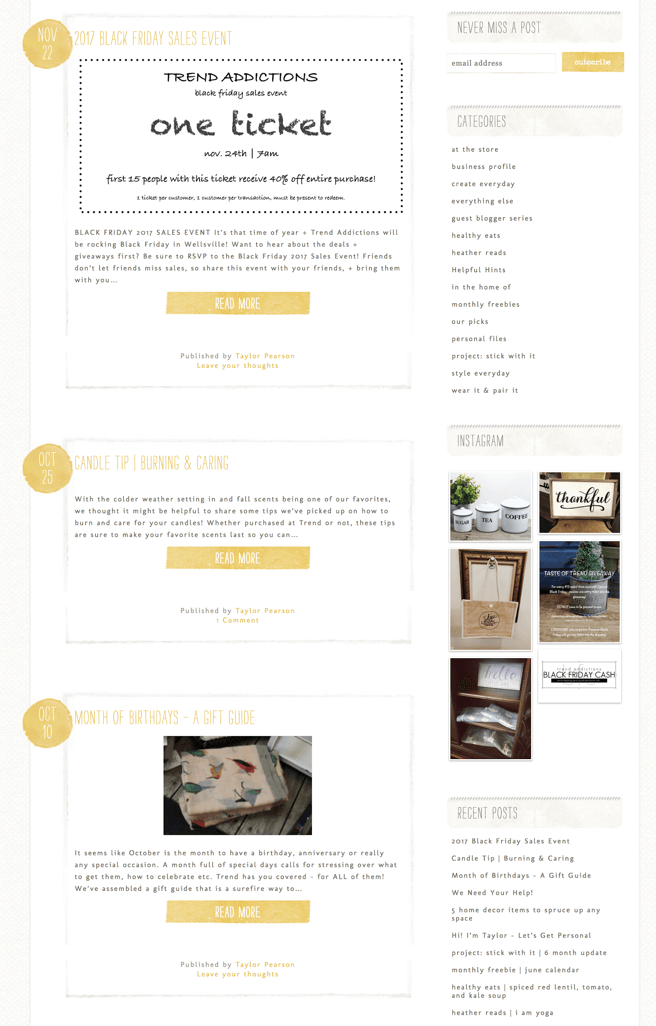
How to Craft Killer Blog Content
It’s challenging to get your voice heard when you’re not as big as Amazon or eBay. This is where blogging can work its magic: writing a blog post can establish you as a more knowledgeable resource than the rest. Below are a few blog writing tips to keep it top notch:
Select a Captivating Blog Topic
When it comes to content creation, you have to come up with a title that people will want to click on. Thankfully, the internet is full of inspiration right at your fingertips. To make brainstorming even easier, find and bookmark high-quality ecommerce blogs in your niche.
These can be blogs operated by small retailers to competitors and everything in between. Write down the headlines of their popular posts, and repurpose them based on your own industry and target audience.
[highlight]Quick Tip: Use a Google Sheet to keep track of your favorite websites. You can also include the blog title and URL of the post to speed things up (instead of manually typing in the URL every time, you can just click the URL to open the relevant blog post).[/highlight]
Here’s an example: Let’s assume you sell consumer electronics and your target audience is the same as Best Buy. What do you do?
You find popular articles on Best Buy’s blog.
This can be done in two ways:
- Manually: The number of social shares and comments on a post can give you an idea of its popularity.
- Using a tool: Tools like Right Relevance and BuzzSumo enable you to see what blog post is performing the best on a particular website.
For instance, entering Best Buy’s blog URL in BuzzSumo will present you with the most popular articles from the retailer’s website based on the number of Facebook engagements and other similar metrics.
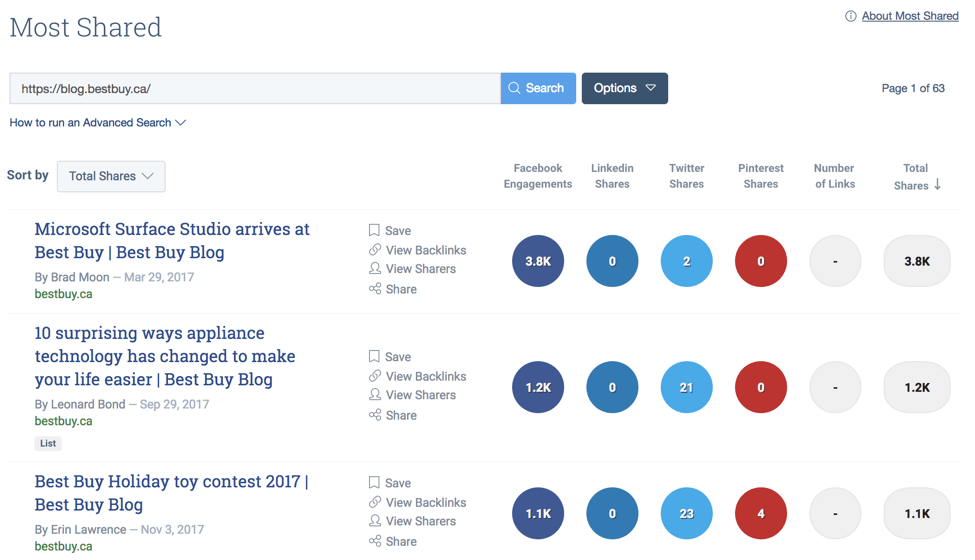
Using the article “10 surprising ways appliance technology has changed to make your life easier” as an example, create your own title that is relevant to your audience and your website, like this:
- The Evolution of Appliance Technology: An Insider’s Perspective
- Appliance Technology to Watch Out for in 2018
See what you did there? Best Buy’s blog gave you an idea, and you created a title. Your competitor essentially inspired part of your content creation strategy.
Tools make it easy to know what topics are popular/trending, but they have a price tag associated with them. Your best bet would be to analyze the number of comments and shares on a post to figure out if a similar kind of title would attract visitors to your site.
Write an Epic Post
A compelling title is an integral aspect of a high-quality post, but it’s also important to ensure the content that follows is equally good. We recommend writing at least a few posts yourself, just so you can get used to blogging before you bring writers on board. Plus, no one loves your brand as much as you do, so you could potentially write a better post than anyone else.
How you do this will vary from individual to individual to some extent as each store owner has their own style and voice – however there are some basic rules of writing epic blog content that might be worth keeping in mind.
Rule #1 Grab Attention with a Startling Introduction
A reliable way to grab visitors’ attention is by inserting an amazing or startling fact in the opening. Take some time to research stats and facts that illustrate the importance of what you’re going to write about. For instance, a post about iPhones can turn heads with an intro like: “Every minute, 395 iPhone units are sold worldwide. That’s over 23,000 iPhones sold each hour!”
Rule #2 Make the Text Snackable
The content should be easy to read. Make it digestible with subheadings. Use italics and bold when appropriate. Avoid making it a link-fest. Insert videos and/or images to illustrate your point, or just to enhance its visual appeal. Also, use a call-to-action to tell visitors what you’d like them to do next i.e. buy your product, subscribe to your newsletter, etc. Here’s an image illustrating the anatomy of a snackable blog post:
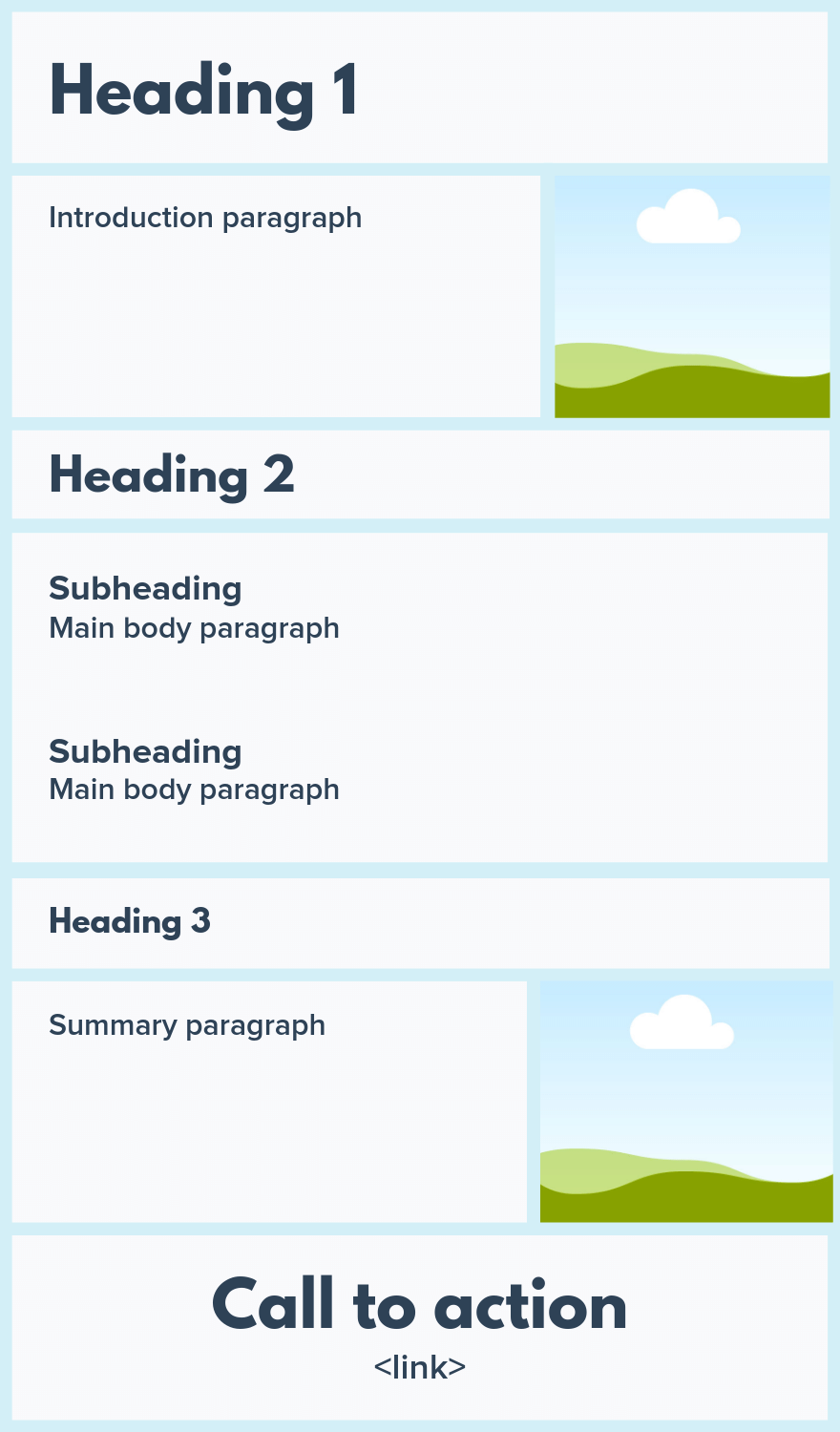
Source: Yell Business
Rule #3 Address All Pertinent Questions
It’s crucial to ensure that you’ve fully addressed any burning questions your readers may have. In other words, your blog post shouldn’t leave any question marks behind. One way to handle this is to put yourself in the shoes of your average reader. Think about their pain points, then go through your blog content to see if it addresses those areas. Try to cover everything to the best of your ability.
Rule #4 Make it Flow Nicely
If you find it challenging to string sentences together, you’re not alone. It’s difficult for a lot of folks. Fortunately, there are several tools you can rely on to improve your content flow. Here are a few free options:
ZenPen: If you’re finding it difficult to stay focused while writing a blog post, give ZenPen a shot. It’s a distraction-free writing software that’s designed to help you put words down without having to stress about formatting right away. It does this by creating a minimalist writing zone that’s free of distractions.
Cliché Finder: Think your content might sound a little cheesy? Use Cliché Finder to Identify opportunities where you can get more specific with your wording.
If your website doesn’t have a blog , you can always start one. If you select a viable topic, you might even be a little shocked by how quickly it generates traffic.
5.2 Vary Your Content Creation Strategy
Today’s online consumer enjoys all kinds of content, from infographics to videos to ebooks. Hence, it’s important to switch up your content creation strategy by creating different types of content. Doing so keep your consumers engaged, entertained and educated.
For an ecommerce website, we recommend including the following content types in your editorial plan.
Custom Graphics & Infographics
If you’re like most people, an image, video or graphic is going to be much more appealing to you than text, which is why 53 percent of content marketers use visuals in 90 to 100 percent of their content. As a result, it makes good sense include visual content in your content creation strategy.
When it comes to creating graphics to support your other branding and promotional efforts, a little bit can go a long way. Custom images can be used anywhere, from your website’s homepage and blog posts to social media and email newsletters.
Nike is a great example of an ecommerce brand that uses simple custom graphics to merge products with its customers’ lifestyle. Take a look at their ‘Motivation’ Pinterest board, which features a series of branded images of athletes in action in their Nike gear with superimposed motivational quotes.
[highlight]Quick Tip: For brand recognition and traffic opportunities, don’t forget to include your company’s logo (and possibly URL) on each piece of content you’re creating.[/highlight]
Infographics
It turns out that consumers really love infographics. One study showed that they receive three times more likes and shares on social media than other content types. While B2B brands may see more benefits or relevant applications for infographics, they can also provide some useful promotional and educational opportunities to B2C brands.
For example, you can create one to show which brands achieved the highest profits in particular season or year, the popularity of a certain product or category, the evolution of a specific type of product or category, or the results of a study or survey – just to give a few ideas.
Subscription beauty box company Birchbox created an infographic that illustrated poll results about women’s face, hair, and body preferences and opinions. Here’s a preview:
Here’s part of another infographic developed by nail, fashion, and beauty company CND (Creative Nail Design). This “The History of Nails” infographic was created to promote their products and generate excitement for an upcoming New York Fashion Week.

Typically, there’s an in-house graphics person or team to help with visual content creation. But if you don’t have that option available, there are a number of convenient tools you can leverage to create infographics for cheap.
Here are a few:
- Venngage – The limited version is free, but you can sign up for the premium version for $19 per month or $190 per year.
- Infogram – Infogram offers a basic account for free, and the step up is a Pro account for $19 per month.
- Piktochart – Creating a free account lets you access all the basic features of Piktochart, , and the Lite account is $15 per month.
- Canva – Offers a collection of free images and premium images for $1. You can also upload your own visual elements.
Depending on your business, you might have a natural opportunity to create more infographics, in which case a paid tool is worth the investment.
[highlight]Quick Tip: Infographics are traditionally a way to showcase research and statistics in the form of numbers, ratios, and percentages, as well as timelines. Take note of whenever you’re dealing with this type of information, as it could potentially help make a good infographic.[/highlight]
Videos
Videos offer an incredible ability for customers to really understand your products and your platform, which in turn translates to more conversions and sales. Statistics show that consumers are 85 percent more likely to purchase a product after watching a video about it.
What are the other benefits of a video? Well, it’s more shareable, clickable, captivating, and descriptive than other content types. It forces visitors stay longer on your website and help boost consumer confidence in your brand. Not to mention Google and social media platforms like Facebook love video-based content.
Here are some ideas on how to incorporate video into your content creation strategy:
Showcasing a product with the use of storytelling, like designer playing cards company Theory11 does in its amazing video ‘The Mystery Box’. Don’t be deterred by the high production value. You can tell stories on a budget too!
Highlighting a particular feature in an entertaining way, like Blendtec’s “Will it Blend?” campaign that showcases how powerful the company’s blenders are. This campaign is quirky, entrancing, and has landed over six million views on one video alone: the iPhone 6 Plus video. (Spoiler alert: Yes, it blends. And it hurts to watch.)
Offering reviews and selection advice like Right Channel Radios does for each of its CB truck radios. These videos are cheap and easy, and have allowed the company to beat out the competition by providing more value and showcasing their extensive product knowledge.
Providing free tips and recommendations, like clip-in hair extensions company Luxy Hair does through weekly tutorials that offer hair styling tips for their visitors. It’s worth noting that Luxy Hair built a seven-figure company with just YouTube marketing.
[highlight]Quick Tip: Don’t limit yourself to these types of videos. For example, plenty of brands have gained viral success from producing a video that’s just as quirky as their brand is. Entertainment value is as good a reason as any![/highlight]
Interactive Content
Interactive content is a type of digital content that requires the active participation of customers. Its goal is to get audiences to take a desired action, which can be as simple as answering a quiz, clicking to reveal more information, or participating in a poll. This gives businesses a way to actively engage their customers with immersive insights that deliver useful information and collect relevant data.
Compare that with other types of content – instead of passively watching a video, listening to a podcast, or reading a blog post, interactive content requires users to pay more attention to the real-time information. As a reward for their engagement, they get personalized feedback which they actually gain from.
Smart ecommerce brands are increasingly incorporating interactivity to deliver engaging experiences. Below are a few real-world examples.
Bellroy is a ‘carry goods’ store that specializes in items like wallets, bags, and cases for things like phones and laptops. They use a clever animated slider that visitors can adjust to show how their wallets fill up versus a traditional, bulky wallet.
Nike’s 360 Fit system offers a tool for women to enter their measurements for finding the perfect-sized sports bra. This includes a video series of mini-tutorials that help them accurately record their measurements.
Brickfielder, a UK-based golf apparel company, uses a sophisticated scrolling and swiping tool that allows customers to learn about their apparel’s features as they explore the product.
Ebooks & Guides
To write an ebook or a guide, you’ll need a strong writer, a strong designer, and a strong idea. For this type of content creation, it’s just as important for it to look good as it is for the idea to be helpful for your audience.
In an ecommerce setting, ebooks and guides might function best as an accent to the product. Generally speaking, you might consider an ebook to be a longer, more detailed guide on a specific subject.
Here are a few examples of how these content types could be used in different industries:
- A fashion or beauty brand can release an ebook or guide for the year’s hottest trends
- A pool supply company may create a guide for proper pool care in northern U.S. states
- A jewelry brand can create an ebook or guide discussing different types of gems or stones
- An outdoor retailer might release an ebook or guide for the best places to hike or camp at a particular time of the year
- Any brand can create a gift-buying guide for the holidays
Take a look at Exposed Skin Care’s ebook for instance.
It provides you with a detailed overview of how to keep your skin clear. There are 11 lessons to learn from, and each of those lessons include high-quality imagery that works to retain the audiences’ attention.
[highlight]Quick Tip: Because of the extra time and resource investment for creating this type of content, be sure to promote it whenever it’s appropriate. See Chapter 6’s multi-channel marketing section for more ideas.[/highlight]
Case Studies & White Papers
Research- and results-driven content like case studies, white papers, and ebooks are especially powerful for B2B brands, as they provide in-depth information that businesses are looking for before they make larger, more complex business investments. In a B2C environment, it might be a great idea to integrate this sort of content into your content creation strategy. However, for smaller-ticket items, most consumers don’t need (or want) to do the extensive research that businesses are typically looking for.
When researching for their upcoming purchases, B2B buyers said that:
- 78percent of them use case studies
- 77percent of them use white papers
- 67percent of them use ebooks
- 67percent of them use third-party and analyst reports
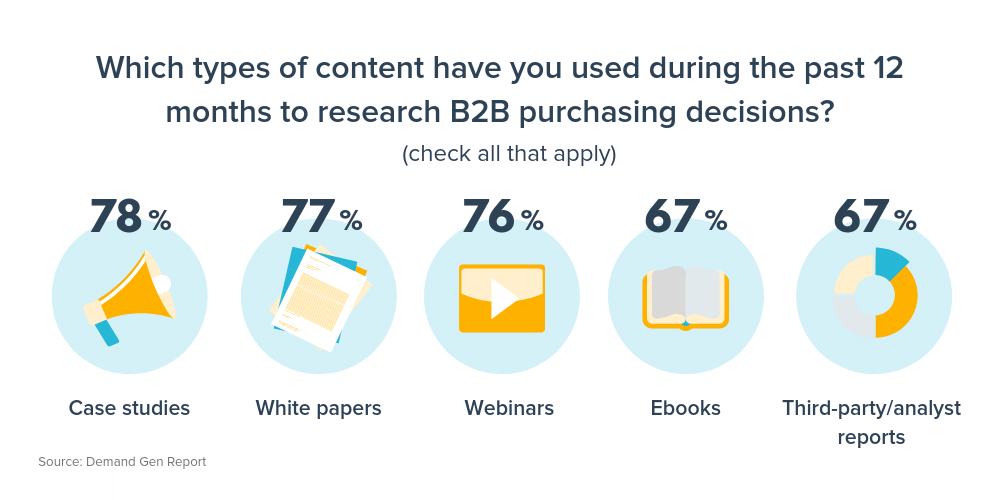
Key elements of a case study include:
- A focus on one particular customer who has used the product your case study focuses on.
- A story of that customer including details about who they are, what their business problem was, and the impact of the product.
- Discussion of specific strategies to solve the problem. If there were any failed attempts with other products, mention those for bonus points.
Key elements of a white paper include:
- Identifying a key problem that your customers face, and describing it in relatable terms.
- Describing potential approaches and solutions, as well as their limitations. You may or may not wish to promote your brand directly, as some white papers are more for educational purposes than a hard sell.
- Statistics and research whenever possible to back up your claims. Opt for professional, credible sources like research firms and government agencies.
For example, if you’re selling something like skin care products, you could publish a white paper that offers scientific evidence for the ingredients that were used in the manufacturing of your items. Or you can publish a case study of long-term results experienced from using a certain type of ingredient over others on the market.
[highlight]Quick Tip: The information from these types of content can be repurposed for other mediums. For example, a case study can be made into a video or discussed on a podcast.[/highlight]
Landing Pages for Content Downloads
When your content creation strategy involves high-level content like downloadable ebooks, case studies, and white papers, consider offering them through a gated landing page. This means that the visitor will have to fill out a form with whatever information you choose before they gain access to download the content. This way, you have their email address for your newsletter, special offers, or other email communications.
Typically, these forms are simple, and at the very least, they include the visitor’s name and email.
If you don’t have the bandwidth to do this internally, you can use a web service like Unbounce or Instapage to develop landing pages quickly and without any necessary coding experience.
Using a Content Calendar Template
Publishing blogs and other content pieces consistently is one of the best ways to drive more visitors to your site. Better yet, regular posting trains your audience to anticipate and engage with your work. That’s precisely why we’re providing you with this list of content calendar template options. Most of them will allow you to plan and schedule content for the upcoming days, weeks and months.
Content Marketing Institute’s Editorial Calendar Template
This template is ideal for people who find it hard to stay focused. The no-frills design is easy on the eyes and allows website owners to perform all the necessary scheduling with ease.
WebFX’s Editorial Blogging Calendar Template
WebFX created this content calendar template with both beginners and professionals in mind. If you’re totally clueless about blogging, it has a variety of tricks and tips to help you along the way.
Compose.ly’s Printable Content Calendar Template
If you want to plan and detail your content schedule with a good old pen, then you should be satisfied with Compose.ly’s printable content calendars. One of them provides a monthly view, while the other offers a more comprehensive, weekly schedule for content publishing.
5.3 Promote and Distribute Whenever Possible
Content marketing can be a cost-effective lead generating strategy for any ecommerce business. According to a study by Demand Metric, content marketing generates more than three times as many leads as outbound marketing, even though it costs 62percent less than traditional marketing methods.
Unfortunately, many inexperienced ecommerce store owners overlook the marketing aspect of content marketing. They spend a lot of time on content creation, creating informative blog posts, articles, videos, images, and podcasts that are tailored specifically for their audience, then sit back and wait for people to rush to their store.
Here’s a reality check: Unless you’re extremely lucky, this strategy is unlikely to work. Without a solid distribution and promotional plan, it’s not content marketing – it’s just content creation – and your content will be lost among the millions of pieces of content that are published around the world every minute.
In fact, many professional marketers agree that content distribution and promotion takes more time than content creation itself, which is why you should pay careful attention to this aspect of content marketing. Expert marketer and entrepreneur Derek Halpern suggests following the 80/20 rule, with 20percent of your time devoted to content creation and 80percent of your time focused on content promotion and distribution.
In this section, we’ll look at some free (and cheap) ways you can promote and distribute your content. Ready? Here we go.
Content Distribution Channels
Almost all content is distributed through one of these three mediums: owned media (channels that your business controls, such as your ecommerce website, mailing list, blog), earned media (channels where your content is shared, but you are not the owner and you haven’t paid for publicity) and paid media (such as Facebook ads and promoted tweets, PPC (pay-per-click) advertising).
While you’re still in the process of building an audience for your store, owned media and earned media are the channels you should focus on. They’re more cost-effective and considered less biased than paid media.
We’ve already talked a lot about popular channels like Facebook, YouTube, Twitter and influencer marketing, so let’s take a look at some strategies for using less commonly owned and earned media channels to distribute and promote your content.
Promote Content through Your Email List
Email is still considered the most effective tool for marketing, with studies showing that it’s 40 times more effective than Twitter and Facebook combined. This means it’s a perfect medium for content promotion.
One popular strategy is to send a regular newsletter to your customers that features content from your website. You can include excerpts or summaries from both past and present articles, and a CTA that allows readers to learn more by clicking through to your site. It’s also a good idea to include social sharing icons that allow people to share your content.
The timing of your newsletter depends on how often you’re creating content. If you’re only creating one new piece of content a week, you probably only need to send a newsletter once a month. If you’re creating new content daily, you could send out a newsletter that highlights the most popular content from that week.
Here’s a beautiful example of an email that Harry’s, a shaving products ecommerce store, sent to its customers with links to some helpful content.
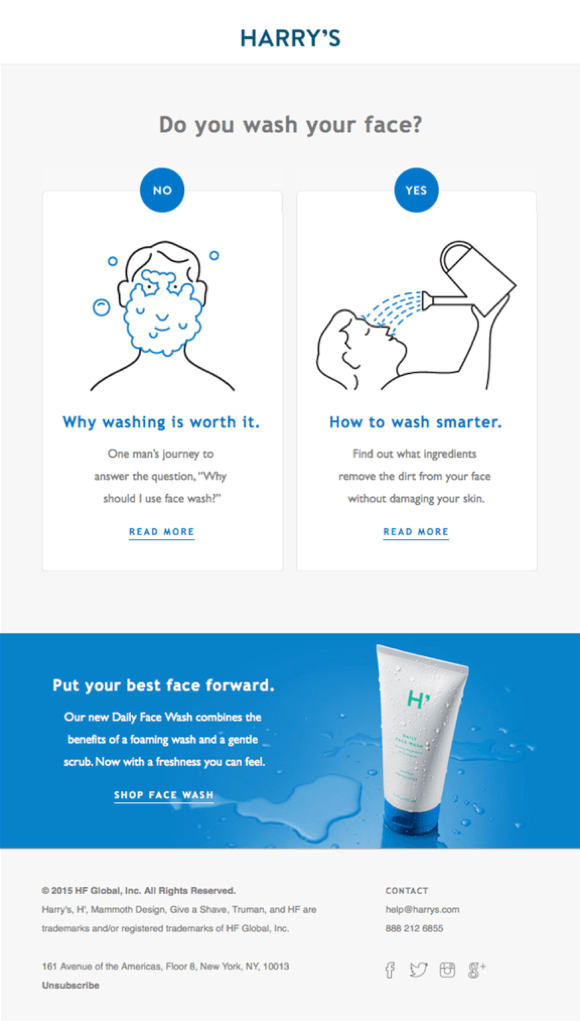
[highlight]Quick Tip: If you’ve gotten any emails from the gated content in Chapter 3, now’s the time to use them. If email marketing is a sound strategy for your brand, consider more ways to gather emails, like a popup window inviting people to sign up for your newsletter.[/highlight]
Answer Questions and Solve Problems
People love content that solves problems and gives advice, which is why things like how-to articles, buying guides, product reviews, and top ten lists are some of the most shared content on the web.
If you have some content that solves a problem, question and answers sites such as Yahoo Answers and Quora are fantastic (and easy) channels for distribution. All it takes is three steps:
- Find people who are asking questions that your content answers. You can do this by searching websites that are using the keywords related to your topic. Look for questions that are recent. Anything more than a few weeks old will most likely be inactive and ineffective for promotion.
- Give complete answers. Short answers come off as spammy and less trustworthy, while detailed answers help you show your expertise and have a greater chance of being upvoted.
- Link to the original content (the content page on your site) for additional information and further resources.
Marketing on sites like Quora is a great way to get free exposure for your store. It’s important to be regularly active on these sites, as you’ll start to gain more recognition, which will help drive more people to your website.
Here’s a good example of a question a bicycle store owner could answer.
Submit Your Content to an Aggregator
Content aggregators are media sites that collect and compile content from independent publishers. Submitting content pieces to them is generally considered a win-win strategy – visitors can see a large variety of content in one convenient location, and creators get to promote their content to a wide audience.
There are numerous free and paid content aggregator sites that accept content submissions, but many are either full of spam or have a very limited readership. Some poor quality aggregators can even hurt your search engine rank. But if you submit quality content to a good aggregator, it can be helpful for driving visitors to your ecommerce store.
For most aggregators, submitting content is as simple as registering an account and providing a link to your content. However, it’s a good idea to review the site and its submission policy before taking the plunge. Here are some well-regarded aggregators to consider:
- Alltop is one of the most popular content aggregators, with a large audience and broad topics. You can submit content to Alltop by clicking on the submission button on the bottom of the page. Because there’s a lot of competition for a place in Alltop’s directory, make sure to submit your best work to the aggregator.
- Blogarama is “the oldest blog directory” and has even more categories than Alltop. Once you’ve created an account, you can quickly submit multiple pieces of content.
- BizSugar is another free aggregator that allows you to submit and tips to their community. It has a small business focus, so you’ll need to submit content related to the business side of your ecommerce store.
Target Non-English Blogs and Social Media Networks
Just because you’re publishing content in English doesn’t mean you have to limit yourself to an English-speaking audience. Only 4.8percent of the world’s population are native English speakers, which means there are billions of potential customers reading content in other languages.
Some non-English blogs and social media networks will accept English content. For those that don’t, you can use a translation plug-in like Transposh to automatically translate your content into multiple languages.
To find non-English or English blogs based in foreign countries, you can perform a simple search on Google. For example, a search for ‘Italian fashion blogs’ leads to this list of the Top 80 Italian Fashion Bloggers on the Web, which could be useful for a beauty products ecommerce store owner looking to get exposure in Europe.
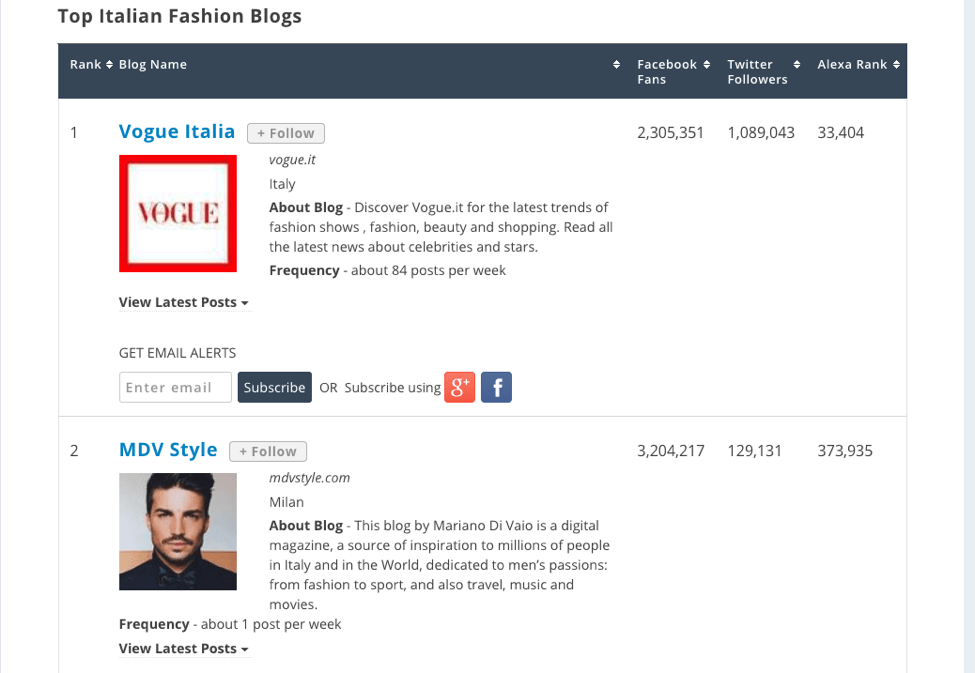
Additionally, you can search up non-English social media networks to get your content a wider reach. Below is a quick list of platforms that could be useful for content promotion.
- WeChat and Weibo are the two most popular social media networks in China.
- Cyworld is a social network with an almost entirely South Korean audience.
- MiGente is a social network similar to Facebook but focused on Latin America.
- VK is a social network with a large community in Russia and North Asia.
You’re now equipped with a number of tools and tactics you can use to drive free traffic to your website, now you just have to focus on the ones that are the best fit for your ecommerce store and will provide you with the most visits.
[highlight]Quick Tip: In Chapter 6, we’ll give you a breakdown of Google Analytics and other similar tools, which can show you traffic stats like which countries and cities your site visitors are in. This can help guide an international shipping or dropshipping strategy if you choose to expand.[/highlight]
If you’re looking to go beyond content creation, below is a list of ecommerce blogs that cover several other aspects of digital marketing.
7 Best Ecommerce Blogs to Follow
Oberlo
Whether you’re interested in starting a dropshipping business, social media marketing or general marketing advice, the Oberlo blog is a top-notch resource for tips and inspiration. You’ll also find stories of how first-time entrepreneurs built a thriving business that helped them escape the 9-5 grind.
Inflow
With years of experience practising inbound marketing, Google Ads, SEO, and pay-per-click advertising, Inflow’s team writers about what they’ve learned over the years – and how you can implement those learning to your own store.
Shopify
Shopify dominates the ecommerce market with its world-class software platform. As such, the company’s blog is a rich resource that’s comprised of in-depth articles, interviews, and detailed guides on various aspects of electronic commerce.
eCommerce Nation
If you’re looking for advice on how to expand your ecommerce business internationally, then you’d love eCommerce Nation. The website provides all kinds of information on how to penetrate new markets, including detailed analysis and surveys of the popular products in those countries.
Bootstrapping Ecommerce
Bootstrapping Ecommerce’s founder Shabbir Nooruddin offers practical strategies and advice for creating an ecommerce store. You’ll find information on everything from how to grow your email list to how to market an online store during the holiday season.
A Better Lemonade Stand
This website’s blog covers a wide variety of ecommerce-related topics, including how to choose and validate products to sell, using customer service help desk for online stores, and dropshipping on third-party marketplaces like eBay and Amazon.
Ecommerce CEO
The Ecommerce CEO blog takes the mystery and complication out of electronic commerce by explaining complex topics in a simplified manner. You’ll discover definitive guides to creating an online business from scratch, reviews of the best tools and platforms, and marketing strategies to boost leads, conversions, and customer retention.



Chapter 5 Takeaways
Content creation is key to driving traffic to your store. If you have the skills and/or resources, publish at least one blog per week, along with other forms of custom content like graphics, videos, and ebooks. If you don’t have the internal or hired manpower to consistently create grade-A content, stick to the mantra of quality over quantity. It’s better to create great content less often than it is to constantly churn out mediocre content. Your content creation strategy should focus on addressing real problems, questions, and issues among your audience base.
Lastly, distribute your content as often as you can – without spamming, of course. Consider a content marketing strategy where you’re promoting via email, submitting to content aggregators, and using it on social media and forums as a way to answer relevant questions and score some referral traffic back to your site.

